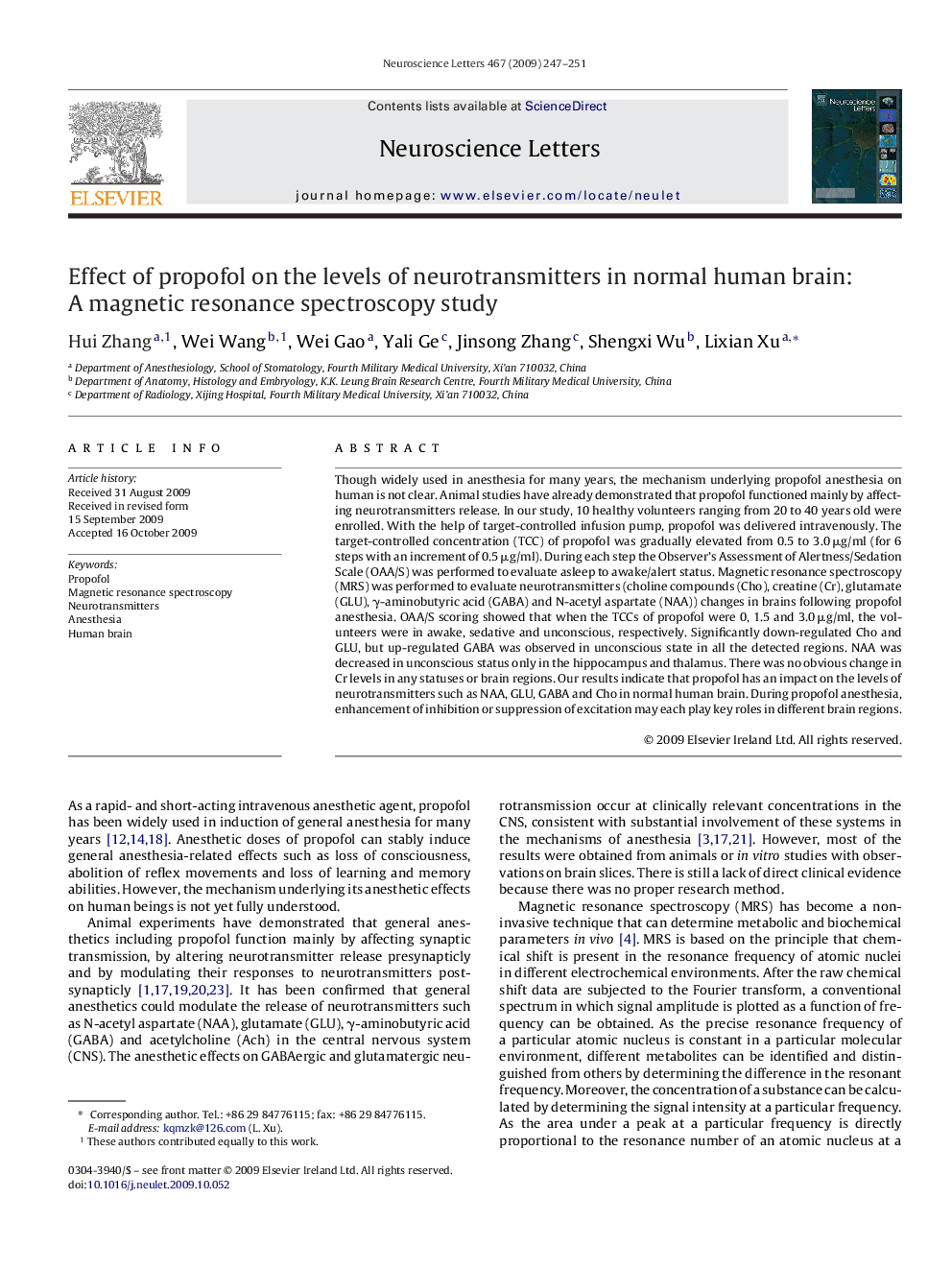| Article ID | Journal | Published Year | Pages | File Type |
|---|---|---|---|---|
| 4346490 | Neuroscience Letters | 2009 | 5 Pages |
Though widely used in anesthesia for many years, the mechanism underlying propofol anesthesia on human is not clear. Animal studies have already demonstrated that propofol functioned mainly by affecting neurotransmitters release. In our study, 10 healthy volunteers ranging from 20 to 40 years old were enrolled. With the help of target-controlled infusion pump, propofol was delivered intravenously. The target-controlled concentration (TCC) of propofol was gradually elevated from 0.5 to 3.0 μg/ml (for 6 steps with an increment of 0.5 μg/ml). During each step the Observer's Assessment of Alertness/Sedation Scale (OAA/S) was performed to evaluate asleep to awake/alert status. Magnetic resonance spectroscopy (MRS) was performed to evaluate neurotransmitters (choline compounds (Cho), creatine (Cr), glutamate (GLU), γ-aminobutyric acid (GABA) and N-acetyl aspartate (NAA)) changes in brains following propofol anesthesia. OAA/S scoring showed that when the TCCs of propofol were 0, 1.5 and 3.0 μg/ml, the volunteers were in awake, sedative and unconscious, respectively. Significantly down-regulated Cho and GLU, but up-regulated GABA was observed in unconscious state in all the detected regions. NAA was decreased in unconscious status only in the hippocampus and thalamus. There was no obvious change in Cr levels in any statuses or brain regions. Our results indicate that propofol has an impact on the levels of neurotransmitters such as NAA, GLU, GABA and Cho in normal human brain. During propofol anesthesia, enhancement of inhibition or suppression of excitation may each play key roles in different brain regions.
